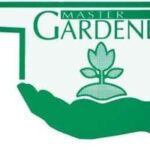Oklahoma Proven, in its 25th year, is a plant evaluation and marketing program designed to help in the selection of plants that do well in Oklahoma growing conditions.
As we all know, Oklahoma can be tough on our gardens due to the extreme cold in winter, followed by extreme heat and often windy conditions, along with drought. The Oklahoma Proven program recommends plants they have already grown, are familiar with, do well in Oklahoma with very few problems, are relatively pest free and are not invasive.
There are several resources to help find the kind of plant you are seeking. “Oklahoma Gardening Television” is full of research-backed plants, planting and care for a variety of plants. Oklahoma State University Extension is full of fact sheets on hundreds of yard and garden practices. Another great resource might be your neighbor. Most often, if you just ask, they might just be full of great ideas and suggestions: maybe what works and what didn’t work. And they would be happy to share with you.
One of the hardest things for me personally was trying to just browse what local merchants have for sale. There is a multitude of growers from whom to purchase seed or plants. Some of my favorite flowers just don’t perform well in my garden. It’s just too hot, dry and windy where I live. There are alternate choices with a little research. Half of the fun of the research is the learning that comes along with it.
Don’t be afraid to experiment. By research, I learned that, with Oklahoma heat and humidity, only Spanish Lavender will thrive here. Who knew? After vegetable gardening for over 10 years, I have decided to go back to the beginning and use the varieties I had success with in the past, regardless of weather conditions that vary somewhat from year to year. Those varieties can be found listed on fact sheets published by Oklahoma State University. https://extension.okstate.edu/fact-sheets/
Another way to choose which plants to use is to check out native plants. They do well because this is where they naturally grow. Besides doing well, they are the best resource for pollen to help our pollinators. There are many plants in the vegetable garden and in agriculture that simply will not produce without pollination. It makes me smile to watch a bumble bee or honey bee move from flower to flower. And then there are the butterflies.
Native plants require the least maintenance, help our native pollinators and many return year after year. Bonus! Many non-native plants can become invasive and displace native species. Some of which you might not realize are non-native, for example, Bradford Pear trees. Once very popular, we now know they are invasive and just not a tree capable of withstanding Oklahoma wind, ice storm, and heavy snowfall. Oklahoma’s state tree, the Eastern Redbud, is a much better choice.
In conclusion, in the words of Lou Anella, director of the OSU Botanic Garden, “If you put the right plant in the right place, you will have success.” Happy gardening, and have fun.




